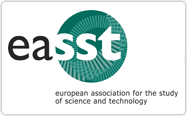How Plastics Came to Pollute the Technical Literature
Evidence from US Patents on Facemasks
DOI:
https://doi.org/10.23987/sts.142349Abstract
Today, we know a great deal about how plastics invade the oceans, but we know less about how these same pollutants begin to colonize the world upstream, even before the manufacturing process, when inventors draft their patents. This paper addresses this gap through a textometric study of the corpus of US facemask patents over a century. Patents are highly constrained by specific laws and rules: they must focus on utility, and only on utility, thus preventing moral concerns such as care for the planet from being part of the patenting process. They must also be generic, which prevents them from focusing on specific materials. Despite these limitations, the empirical analysis of our corpus reveals the linguistic tricks and cultural patterns that have allowed plastics, but also health and environmental concerns, to circulate in patents. The use of certain rhetorical devices, such as “preferably” and “or any other suitable material(s),” helps to mention specific materials while preserving the genericity of patents; in addition, the reference to market-based components contributes to externalize environmental and health considerations. As the analysis shows, most of these patterns contribute to deepening the production of ignorance in contemporary societies, although recent developments offer a glimmer of hope: the reference to external pressures for sustainability, or the transformation of the concept of sustainability into a material property, has helped to transform ethical concerns into useful facts, thus facilitating the replacement of plastics with more sustainable materials in the patent literature.
Downloads
Published
Versions
- 2025-09-15 (2)
- 2024-08-07 (1)
Issue
Section
License
Copyright (c) 2024 Franck Cochoy

This work is licensed under a Creative Commons Attribution 4.0 International License.





